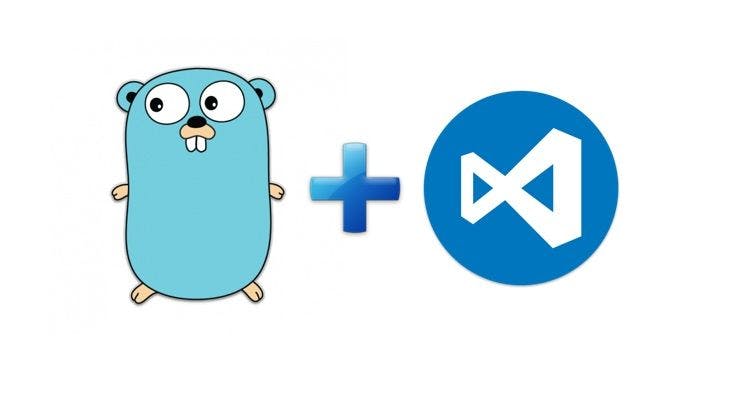VSCode is my favorite IDE nowadays: simple, lightweight, and versatile.
In this article, I'll show how we can configure some useful user snippets in VSCode to make our life easier.
Table-driven tests snippet
Since I read this Dave Cheney's article, table-driven tests have become my favorite way to write tests in Golang.
Here's an example for calculating Fibonacci number:
func TestRecursiveFibonacci(t *testing.T) {
testCases := []struct {
name string
n uint
want uint
}{
{
name: "zero",
n: 0,
want: 0,
},
{
name: "one",
n: 1,
want: 1,
},
{
name: "two",
n: 2,
want: 1,
},
{
name: "three",
n: 3,
want: 2,
},
}
for _, tc := range testCases {
t.Run(tc.name, func(t *testing.T) {
if got := RecursiveFibonacci(tc.n); got != tc.want {
t.Errorf("got: %d, want: %d", got, tc.want)
}
})
}
}
This is the output:
=== RUN TestRecursiveFibonacci
=== RUN TestRecursiveFibonacci/zero
=== RUN TestRecursiveFibonacci/one
=== RUN TestRecursiveFibonacci/two
=== RUN TestRecursiveFibonacci/three
--- PASS: TestRecursiveFibonacci (0.00s)
--- PASS: TestRecursiveFibonacci/zero (0.00s)
--- PASS: TestRecursiveFibonacci/one (0.00s)
--- PASS: TestRecursiveFibonacci/two (0.00s)
--- PASS: TestRecursiveFibonacci/three (0.00s)
PASS
ok bitbucket.org/tiagoharris/fibonacci/fibo 0.715s
It can be a bit boring writing this test structure every time. That's where predefined user snippets come to help.
Configuring a user code snippet in VSCode
Open up VSCode. If you're using macOS, hit command + shift + p and start typing "snippet":
After pressing ENTER, type "go" and select "go.json":
Then, ENTER again and it will open "go.json":
Here's where we'll define a snippet for generating the table-driven test basic structure:
"Table driven test": {
"prefix": "tabletest",
"body": [
"func Test${1:YourFunc}(t *testing.T) {",
"\ttestCases := []struct{",
"\t\tname string",
"\t}{",
"\t\t{",
"\t\t\tname: \"happy path\",",
"\t\t},",
"\t}",
"\tfor _, tc := range testCases {",
"\t\tt.Run(tc.name, func(t *testing.T) {",
"\t\t})",
"\t}",
"}"
],
"description": "Create basic structure for a table driven test"
}
- "Table driven test": a descriptive name for our snippet;
- "prefix": how can we invoke this snippet? In our case, every time we type "tabletest" in any golang file (*.go), the structure will be written into it;
- "body": the snippet itself. I'm using '\t' for tabbing. If you want to enter a new line, just type in '\n';
- "func Test${1:YourFunc}(t *testing.T) {": here I'm using "${1:YourFunc}" so the cursor will be positioned around "YourFunc";
- "description": a friendly description of this snippet.
Invoking it
When you start typing "table", VSCode will suggest our snippet. Press ENTER:
Notice that the cursor is around "YourFunc", so you can type your test name immediately.
Main function snippet
Here's another snippet that I find useful: it defines a basic structure for a file with the main function:
"Main Func": {
"prefix": "mf",
"body": [
"package main\n",
"import (",
"\t\"fmt\"",
"\t\"os\"",
")\n",
"func run() error {",
"\treturn nil",
"}\n",
"func main() {",
"\tif err := run(); err != nil {",
"\t\tfmt.Println(err)",
"\t\tos.Exit(1)",
"\t}",
"}",
],
"description": "Create basic structure for a script with main function"
}
Invoking it
Press "ENTER":
Then a basic structure for a file with the main function will be written.
Our final "go.json" is the following:
{
"Table driven test": {
"prefix": "tabletest",
"body": [
"func Test${1:YourFunc}(t *testing.T) {",
"\ttestCases := []struct{",
"\t\tname string",
"\t}{",
"\t\t{",
"\t\t\tname: \"happy path\",",
"\t\t},",
"\t}",
"\tfor _, tc := range testCases {",
"\t\tt.Run(tc.name, func(t *testing.T) {",
"\t\t})",
"\t}",
"}"
],
"description": "Create basic structure for a table driven test"
},
"Main Func": {
"prefix": "mf",
"body": [
"package main\n",
"import (",
"\t\"fmt\"",
"\t\"os\"",
")\n",
"func run() error {",
"\treturn nil",
"}\n",
"func main() {",
"\tif err := run(); err != nil {",
"\t\tfmt.Println(err)",
"\t\tos.Exit(1)",
"\t}",
"}",
],
"description": "Create basic structure for a script with main function"
}
}
Cool, isn't it?


